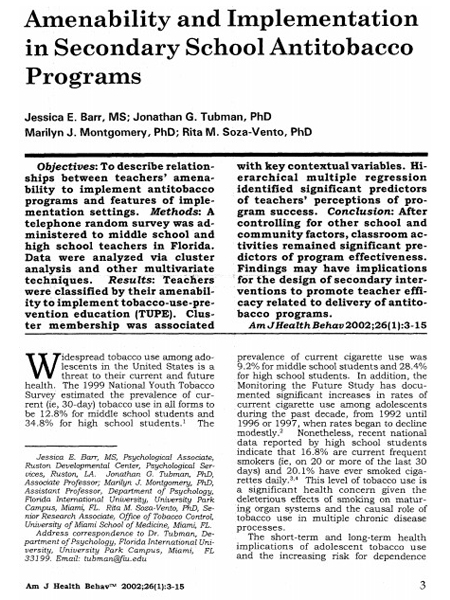Amenability and implementation in secondary school antitobacco programs
 Abstract: To describe relationships between teachers’ amenability to implement antitobacco programs and features of implementation settings. A telephone random survey was administered to middle school and high school teachers in Florida. Data were analyzed via cluster analysis and other multivariate techniques. Teachers were classified by their amenability to implement tobacco-use-prevention education (TUPE). Cluster membership was associated with key contextual variables. Hierarchical multiple regression identified significant predictors of teachers’ perceptions of program success. After controlling for other school and community factors, classroom activities remained significant predictors of program effectiveness. Findings may have implications for the design of secondary interventions to promote teacher efficacy related to delivery of antitobacco programs.
Abstract: To describe relationships between teachers’ amenability to implement antitobacco programs and features of implementation settings. A telephone random survey was administered to middle school and high school teachers in Florida. Data were analyzed via cluster analysis and other multivariate techniques. Teachers were classified by their amenability to implement tobacco-use-prevention education (TUPE). Cluster membership was associated with key contextual variables. Hierarchical multiple regression identified significant predictors of teachers’ perceptions of program success. After controlling for other school and community factors, classroom activities remained significant predictors of program effectiveness. Findings may have implications for the design of secondary interventions to promote teacher efficacy related to delivery of antitobacco programs.
Barr, J.E., Tubman, J.G., Montgomery, M.J., & Soza-Vento, R.M. (2002). Amenability and implementation in secondary school antitobacco programs. American Journal of Health Behavior, 26(1), 3-15. doi:10.5993/ajhb.26.1.1
